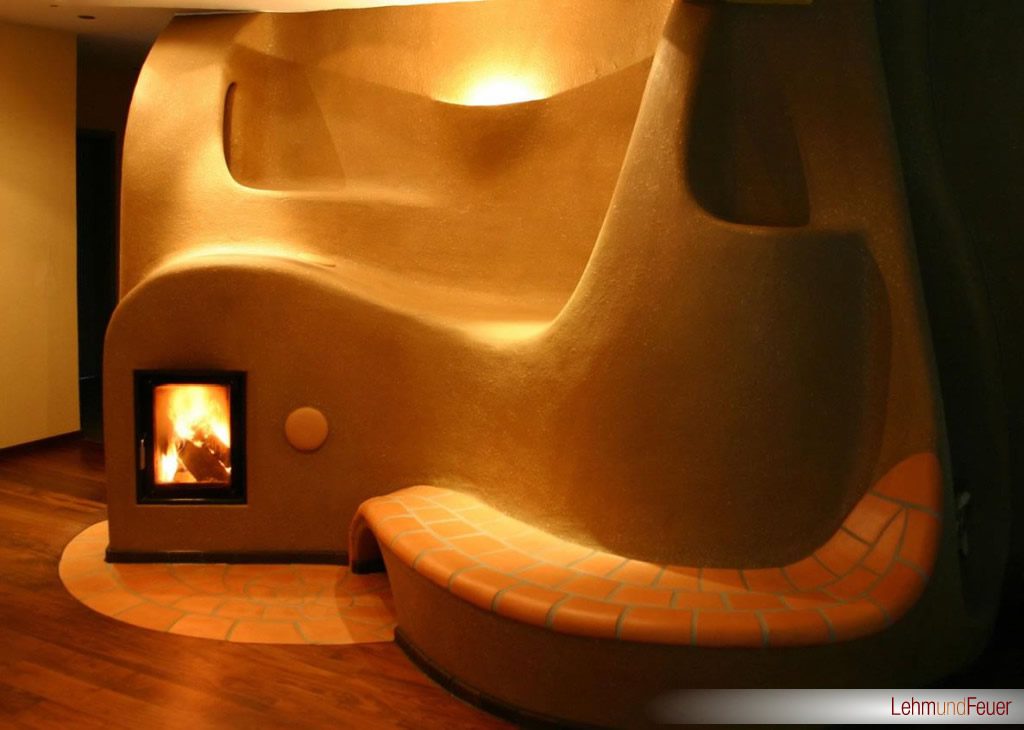Endless possibilities for efficient space heating using local materials and skills
Choosing the way to heat one’s home is a complex task for people like Transitioners. We have to think of efficiency and environmental impacts, of availability and autonomy, of the more dull aspects such as investment and running costs and not least comfort and aesthetics.
In Hungary as in most of Europe we have to deal with harsh winters. For people living in rural areas, there really are lot of choices to choose from when it comes to heating. As with many aspects of technology often the right choice lies somewhere halfway between tradition – things that proved to work for centuries in a given environment – and new technological innovations and developments. You might have heard of the term “masonry heaters”, which is something Transitioners around here have been experimenting with. Alongside the international pool of knowledge in this field we also have a rich heritage of traditional designs to build on.
What are masonry heaters?
Masonry heaters are space heating devices which work on the principle of burning wood rapidly and storing the resulting heat in a large mass (usually at least 500 kg). What essentially happens is that the fuel burns in the firebox, the combustion chamber – which is like the “engine” – and then most of the heat produced is “soaked up” in the heavy body of the heater – much like in a battery – which then slowly releases that heat to its environment; your home. Typically you load the fire once every 12 to 24 hours (or even less frequently if you have a very well insulated home). Much of this heat would just get drawn out of your chimney if you were using a hearth or a metal stove. This makes masonry heaters much more efficient while due to well-designed fireboxes produce minimal amounts of harmful emissions.
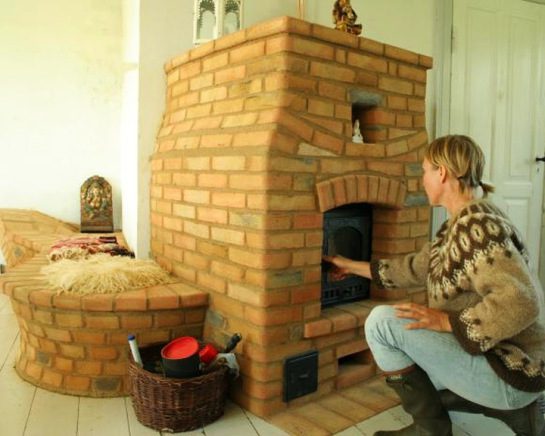
Picture above Danish masonry heater built by Péter Szalai (Hungary)
Masonry heater by Lehm und Feuer (Germany)
A Little History
In Europe these type of heaters have been around for centuries. Just like with traditional building, stove designs vary from region to region; there are Russian stoves, Scandinavian masonry heaters and the kachelöfen (or “tile stoves) used all over Germany and Central-Eastern Europe and of course many variations of these. Even if you just look at Hungary, the types of stoves people had been using reflected their local natural environment and their social status. For example in the great plains where wood is scarce people used the “búbos” stoves, where agricultural residues such as corn cobs and stalks could be burned in a large domed firebox or we have a traditional design called the “economy fireplace” using commonly available materials (clay, sand, bricks and limewash) which is a heater, a cook stove and an oven all in one. There are also the tiled stoves (kachelöfen) where the intricacy of the tile work can really show off status, while stove tiles were mass produced in the socialist era flooding the homes with a few emblematic designs, which you can still find in many houses, even in some flats in urban areas.
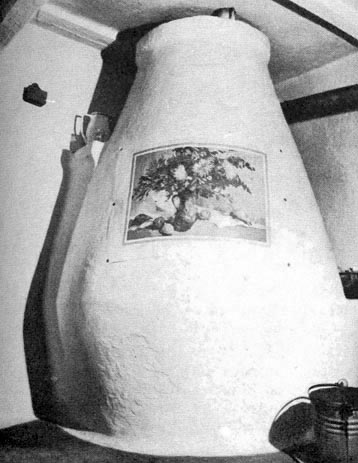
Traditional “bubos” oven heater (fed from outside)] (Hungary)
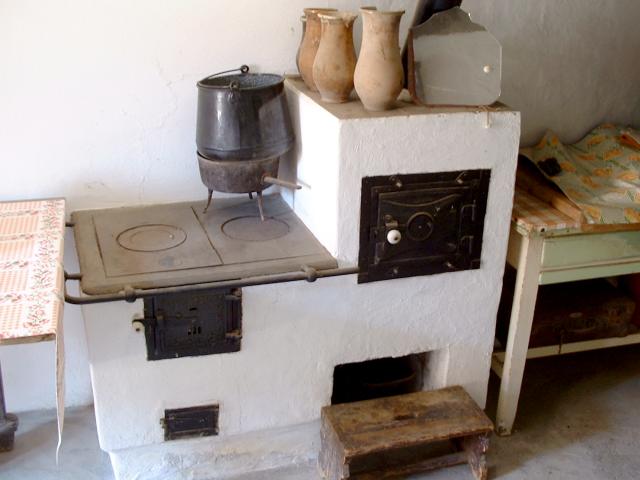
Traditional “economy fireplace” (Hungary)
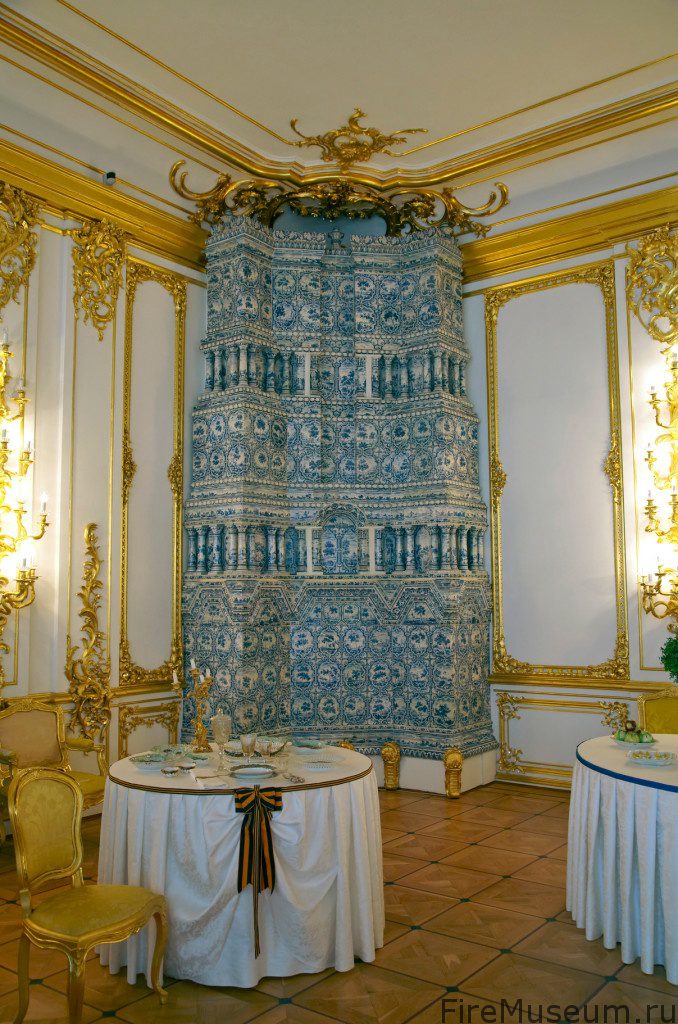
Russian tiled stove
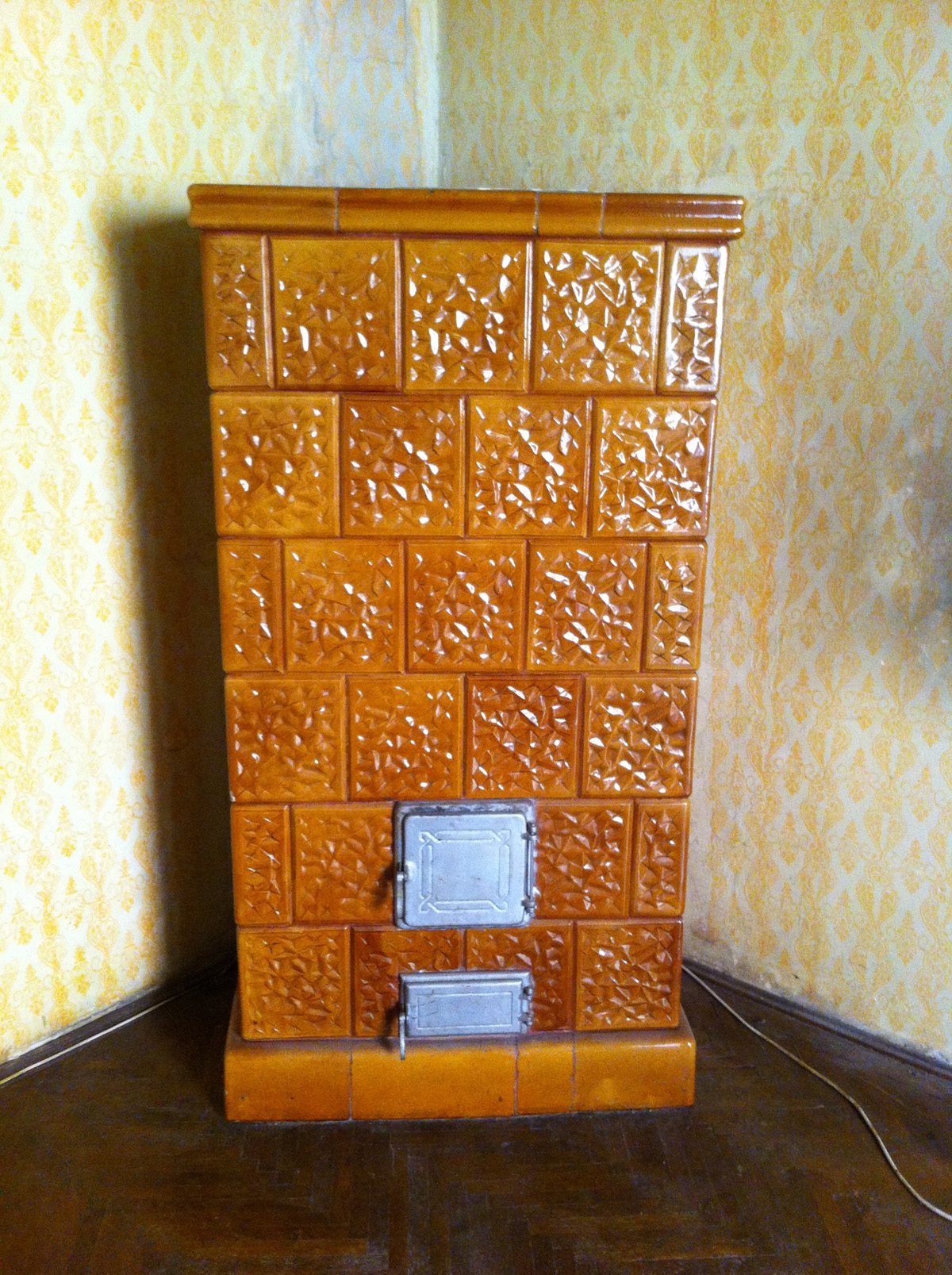
Classic tiled stove from the socialist era (Hungary)
In recent decades with increased environmental awareness and interest in renewables, masonry heaters have also become an area of innovation. On one hand we can see new high-tech materials such as refractory (high heat resistant) cements and mortars developed for heaters, specialized prefabricated firebox parts (like the Austrian “Bio-Feuerraum” or biological combustion chamber claiming around 90% combustion efficiency) and computer aided design softwares for optimising heaters. On the other hand there is innovation coming from the DIY and permaculture movements such as the masonry rocket stoves. With these the focuses alongside efficiency is the use of locally sourced and recycled materials. In the USA the non-profit Masonry Heater Association (MHA) is combining all state-of-the-art innovation and traditional building skills in masonry heater building promoting its application through education, testing, certification and annual meetings.
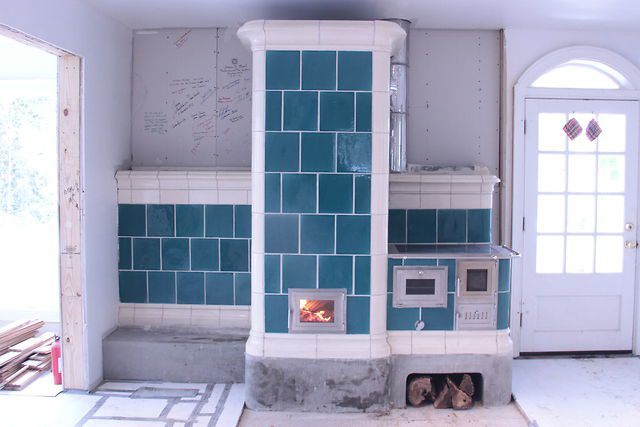
Kachelofen by Jessica Steinhauser MHA member stove mason and pottery artist (Canada)
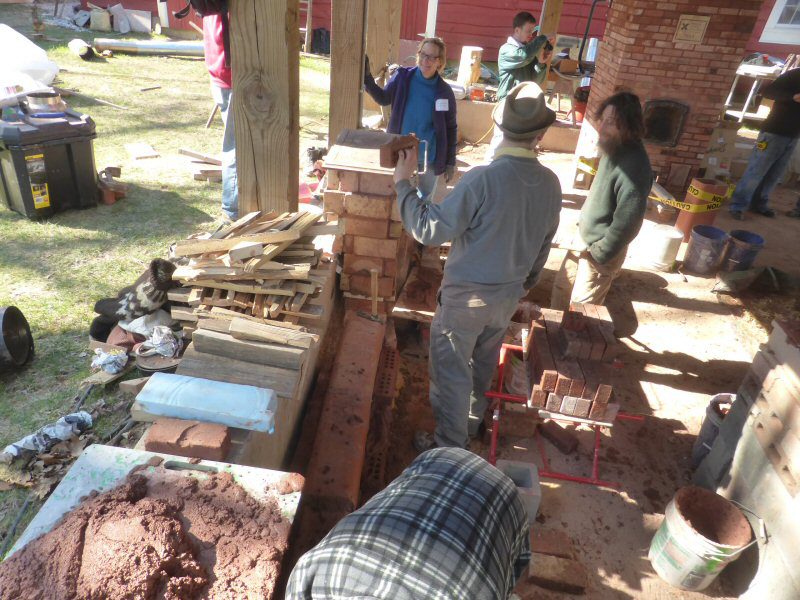
MHA Annual Meeting 2013
What are the benefits?
So why is it that we think masonry heaters are something worth exploring and adding to the skill-set of transition communities?
- Wood – derived from sustainably managed forests – is a low-impact, carbon neutral renewable resource which is locally available and can encourage biodiversity.
- Masonry heaters provide pleasant, steady temperatures in the home all through the day as radiant heat warms objects directly (as opposed to just heating air through convection). A home – especially a well insulated one such as a straw-bale house – can be heated with minimum amounts of wood resulting in an efficient off-grid heating system.
- Versatile and creative; as custom built devices they can cater for a wide variety of needs. The size will be determined on the heating needs of your home, you can include a stove top or oven or can even heat water. In terms of looks the possibilities are truly endless limited only by the materials you have available and your and your mason’s imagination and creativity.
- Locally sourced materials; the large thermal mass of the heaters will typically come from locally sourced natural materials such as (new or reclaimed) fired bricks, clay, sand or stone.
- Lasting and low maintenance; a well-built heater can serve decades without needing any major repairs. There is a yearly maintenance of cleaning the flue paths that you can do yourself easily or call your mason to do it.
- To build them you need trained craftsmen, creating meaningful, creative jobs in the local economy.
What next?
Here in Hungary we are exploring masonry heaters and are working on ways to make this knowledge and skills more accessible. One of our main focus is to find ways in which the poorest communities (such as segregated Roma communities living in extreme poverty) can also benefit from more efficient energy use, and we believe masonry heaters play a part in this. The challenge is to have access to innovation as well as to take part in it by building and experimenting with masonry heaters in our communities as well as sharing this knowledge.
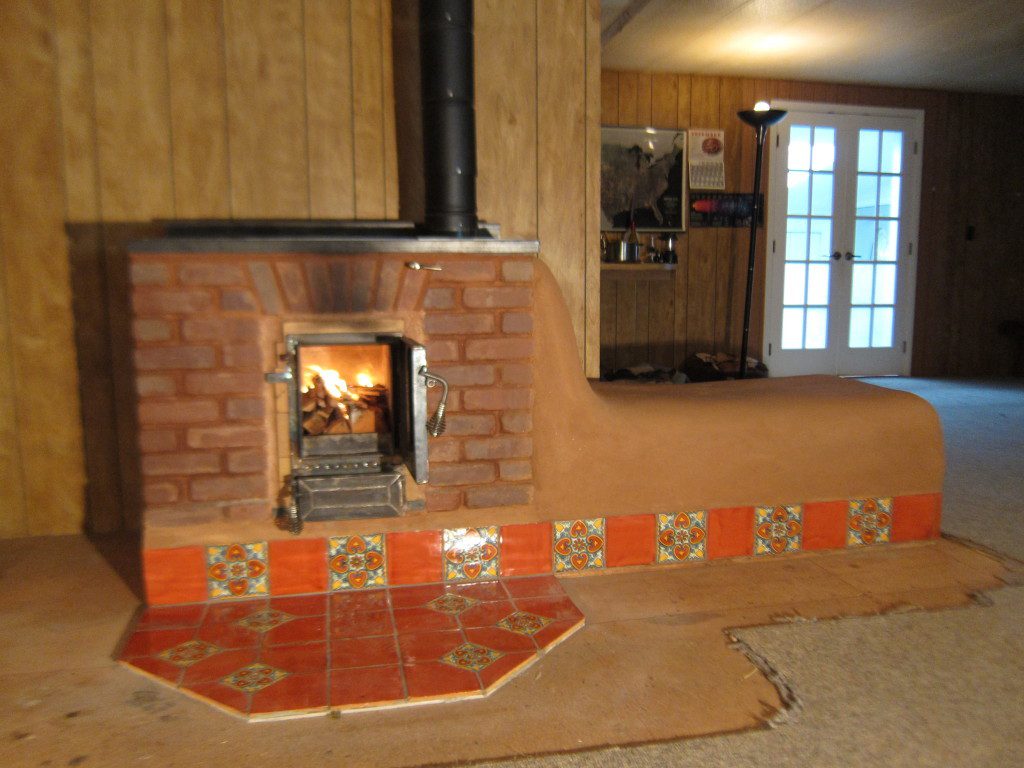
A small masonry heater: Cabin Stove by Firespeaking
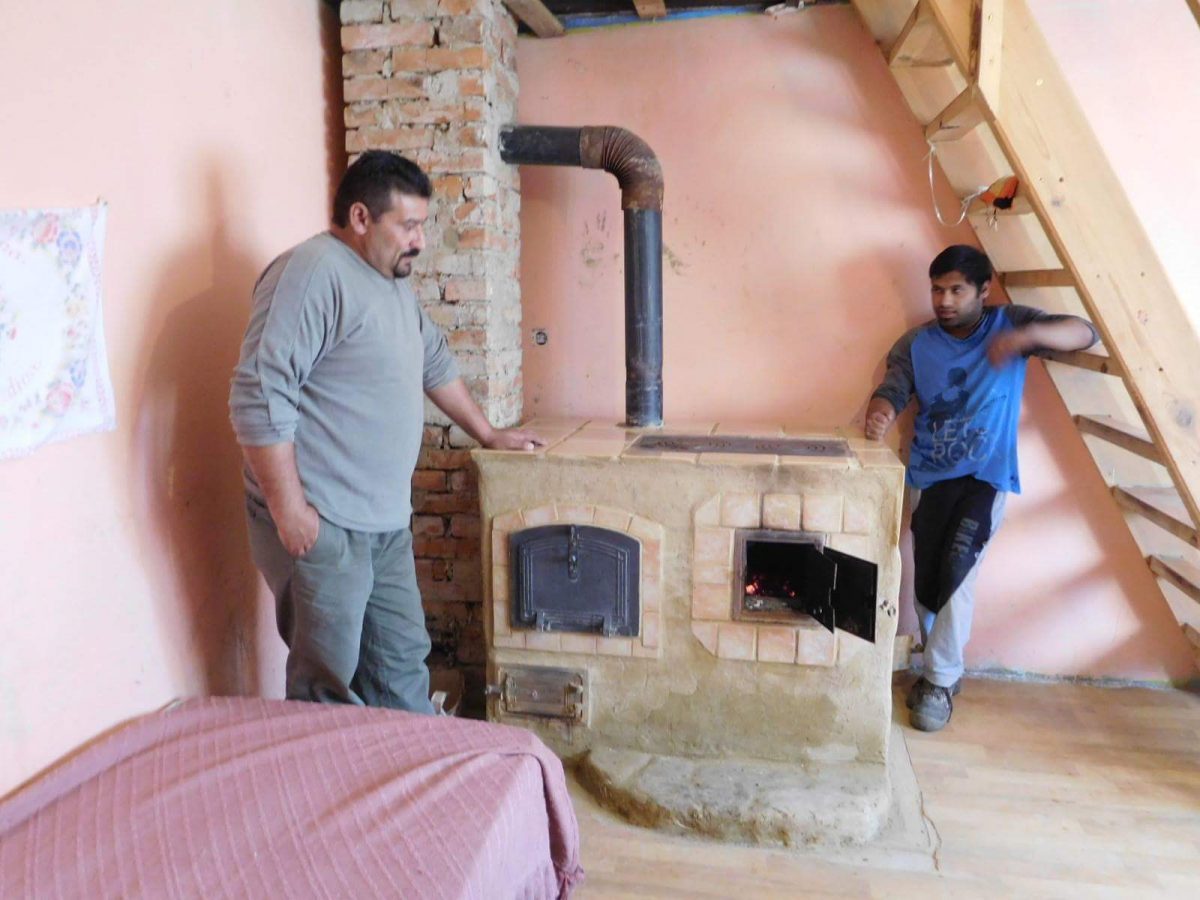
Heater built by Nora Feldmar and Ed Morriss in a Roma community in Slovakia, design based on the Cabin Stove
This article was written by Transition Hungary



